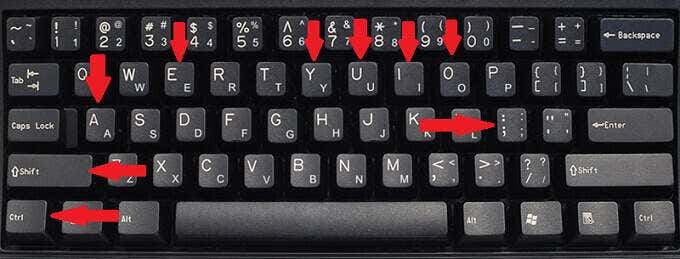
Four extra tones for the letter "ü", which are "ǖ, ǘ, ǚ, ǜ", is added in Unicode as per GB/T 2312. For example, the surname Lü (吕) would be written as "Lyu" in the passports.

However, Ü sound should be officially represented by "yu" in Pinyin when it's difficult to enter Ü. As a result, romanisation of Chinese with the letter "V" representing the Ü sound is sometimes found. As the letter "Ü" is missing on most keyboards and the letter "V" is not present in standard Mandarin pinyin, the letter "V" is used on most computer Chinese input methods to enter the letter "Ü". Words such as 玉/yù (jade) or 句/jù (sentence) are pronounced with, but are not spelled with "Ü", although Wade–Giles and Lessing use "Ü" in all situations. Pinyin only uses "Ü" to represent after the letters "L" or "N" to avoid confusion with words such as 路/lù (road) and 怒/nù (anger). Standard Mandarin Chinese pronunciation has both the sounds and. This same letter appears in the Chinese Romanisations pinyin, Wade–Giles, and the German-based Lessing-Othmer, where it represents the same sound : 綠/lǜ (green) or 女/nǚ (female). In the Swedish and Finnish alphabets ü is alphabetized as y. It is considered a distinct letter, collated separately, not a simple modification of U or Y, and is distinct from UE. The letter Ü is present in the German, Hungarian, Turkish, Uyghur Latin, Estonian, Azeri, Turkmen, Crimean Tatar, Kazakh Latin and Tatar Latin alphabets, where it represents a close front rounded vowel.
#Lowercase a with umlaut software
Software for optical character recognition sometimes sees it falsely as ii. In other languages that do not have the letter as part of the regular alphabet or in limited character sets such as ASCII, U-umlaut is frequently replaced with the two-letter combination " ue".

In Swedish the letter is called tyskt y which means German y.

It is however not a part of these languages' alphabets. In languages that have adopted German names or spellings, such as Swedish, the letter also occurs. The letter is collated together with U, or as UE. It represents the umlauted form of u, which results in when long and when short. A glyph, U with umlaut, appears in the German alphabet.


 0 kommentar(er)
0 kommentar(er)
